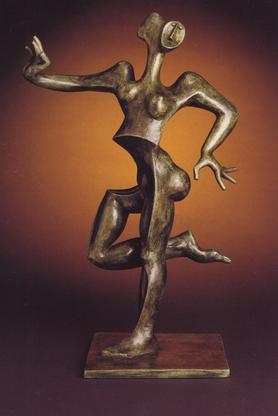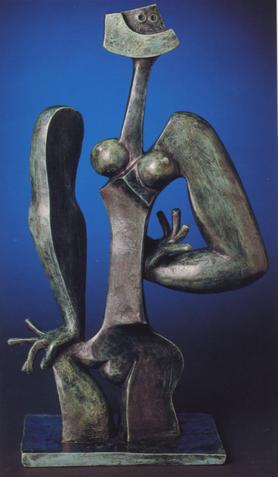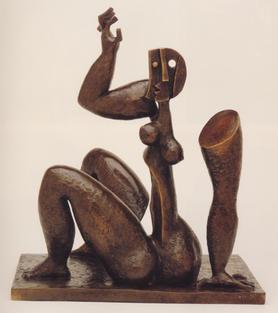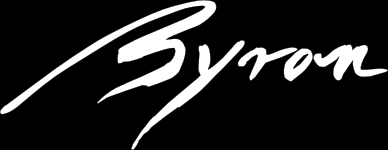Sculpture

The production of Byron Gálvez in the third dimension has a series of elements that define it and distinguish it in the landscape of current Mexican sculpture. Heir to the full development of Mexican art in three dimensions and of his passion for the great sculptors from the past of Europe and Meso-America, as well as to the more notorious examples of our century such as Moore or Brancusi, Byron is started into sculpture during the creation of murals.
The sculptural production of Byron Gálvez stems from the personal need for basic expression in metal and as part of a tradition that he transforms and makes it grow in its modern scope.
His sculptural creation is one of the first both geometric and figurative expressions that appear in the landscape of the fine arts in modern Mexico. The fact that it is not better known is because Byron Gálvez has been more dedicated to painting and etchings. However, this does not take away from its quality, its strength or the weight of his expression.
Early in his career, Byron was an integral part of the founding of the Workshop of Metal Sculpture in San Carlos, together with other students such as Armando Ortega y Baltazar Martinez.
It was this way that Byron Gálvez participated in projects such as the one that was proposed during the construction of the System of Collective Transport –The Metro– in the late sixties.

The first sculptural work of Byron Gálvez were full of influence of the art of Manuel Felguérez, which is evident if one compares the mural of Felguérez in the Diana theater with Byron’s metal and stained glass mural that he made in 1967 and that is currently in his Mixquiahuala studio.
In this mural, there is a treatment to the geometrical elements that would be decisive in his later pictorial production, a notable character of which is its three dimensionally. In the sculptural Byron has expressed himself mainly in metal and bronze and though he feels a special passion for stone work he has done less of it since he considers it a luxury.
Years later, when Byron Gálvez started his frequent international travels, he was able to see the works of Henry Moore and of Chillida with more mature eyesight. And when he visited Stonehenge, seeing those empty spaces inhabited by dolmens he understood the sacred sense of sculpture and he vibrated and cried surrounded by the millennial stones. He comprehended that being there was being in direct communication with the deep spirituality of primal art.
The sculptural work of Byron Gálvez started, as I mentioned in lines past, with projects for murals and bronzes in organic shapes. As time has passed, his three dimensional creations are made from his fragmented figures, characteristic of his more prolific pictorial period.
I allude to these feminine figures that float in space with a hieratic character, the gaze fixed on the spectator, the thighs sensuous, an arm mutilated or floating posed in the base of the sculpture and the other high, with the fingers of the left hand open, transmitting a fate of religious warning.

To me these works are figurative prodigies in metal. The same happens with pieces such as the ballerina or the thinker. There exists in them a modernity that is charged with the purest antiquity: The Meso-American and Center-European.
That is to say that the majority of his sculptures can be seen conceptually as syncretic acts. Full of movement and rhythm, of eroticism and power, Byron Gálvez’s sculptures remind us of the sacred function of three-dimensional art and constitute a miracle in bronze.
After having noticed that his first abstract period in two dimensions had given everything he had, Byron Gálvez came back –as I’ve previously written– to sculpture and since then his production in three dimensions has been a translation of his pictorial figures and, as a consequence, of those that move, inhabit and act in his graphical work.
Because sculpture is a discipline that he has mastered and in which he has achieved an incomparable originality and because in it, in this period, he started to find a different set of ideas, of formal solutions, of constructive processes. Clay, repoussage, and welding gave him freshness and different perspectives to board the creative act.
Each sculpture was the seed of an oil or an etching and vice-versa. This means, from where I see it, that feedback from the different techniques is a fundamental feat in the complete creation of this author.




